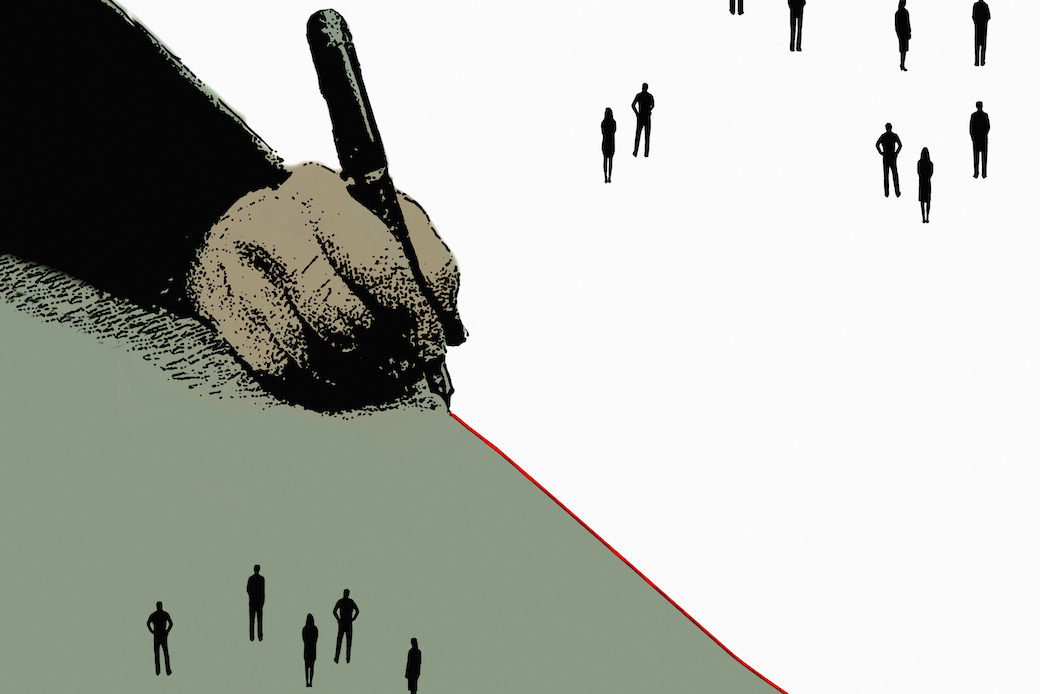RIO DE JANEIRO, BRAZIL – Racial inequality in the Brazilian labor market is historical and has been exacerbated by the crisis triggered by the novel coronavirus pandemic. This is shown by official data from the Brazilian Institute of Geography and Statistics (IBGE) and the Ministry of Economy.

The main indicators show that blacks and mixed-race individuals, who represent over half of Brazil’s population (56.8 percent), were the most affected by the impact of the crisis on the labor market. The data show that:
Unemployment has increased the most among blacks
The unemployment rate among blacks was greater than among others. The level of occupation among blacks became even lower than that of whites. The drop in the occupation rate among blacks was more intense than among others. Blacks have a smaller proportion of workers with a signed employment booklet. The remuneration of blacks is lower than that of others in all segments
“Whenever reports come out, social indicators related to the black population reveal a worse condition. The crisis does not bring a new cause, a new motive in itself. But it further exacerbates the precariousness to which the black population is historically subjected,” says Daniel Teixeira, director of the Center for the Study of Labor Relations and Inequalities.
Unemployment has risen among all segments of the Brazilian population, but the highest climb occurred among blacks.
According to the IBGE, in the transition from the first to the second quarter of 2020, which corresponds to the first three months of the pandemic, the unemployment rate among blacks increased by 2.6 percent and that of the mixed-race population by 1.4 percent Among whites, the increase was only 0.6 percent
The unemployment rate among blacks stood at 17.8 percent, and among mixed-race individuals at 15.4 percent. On the other hand, among whites the unemployment rate stood at 10.4 percent, 2.9 percent now the country’s overall rate, which stood at 13.3 percent.
Thus, the difference between the rate for blacks and whites was 7.4 percent, for mixed-race was 2.4 percent, and 4.5 percent in relation to the country’s general average.
In addition to the more significant increase in unemployment among blacks and mixed-race individuals, the occupation level for these groups fell below that of whites in the second quarter.
When compared with the 1st quarter, the level of occupation of blacks fell by 6.9 percent and that of mixed-race individuals by 6.1 percent. Among whites the drop stood at 4.9 percent.
Although blacks hold the highest percentage of participation in the workforce (which includes people of working age, occupied or not), the drop in their occupation rate was more intense than among mixed-race and whites, both compared to the 1st quarter this year and the 2nd quarter last year.
When compared to the 1st quarter, the drop in the rate of occupation among blacks was 2.9 percent and among mixed-race individuals it was 1.7 percent. Among whites, the drop stood at 1.1 percent.
According to Marcelo Neri, an economist at the Getulio Vargas Foundation, director of FGV Social, the highest increase in unemployment and the highest drop in the occupation of blacks and mixed-race individuals during the pandemic can be explained by the effects of social isolation on the trade and services sectors, which were the most heavily impacted.
“These are heterogeneous sectors, particularly the service sector. These sectors tend to be more intensive for blacks and mixed-race individuals than other sectors such as industry, which is whiter. This may be related to schooling too, but there are several dimensions that overlap,” the researcher pointed out.
Neri emphasized that informality in the labor market can also explain the more negative effects for blacks and mixed-race individuals in terms of unemployment and occupation. He pointed out that these groups form the majority of casual workers in Brazil.
Data compiled by IBGE in 2019 show that while the rate of informality among whites was 30.1 percent, it reached 39.9 percent for blacks and 43.5 percent for mixed-race workers.
The most recent IBGE data, which assessed the impact of the pandemic on the labor market, showed that the number of casual workers in the country fell by 9.4 percent in five months of pandemic.
“This is an atypical recession in terms of informality, which generally works as a mattress that cushions labor drop. But this time informality dropped because social isolation was more striking for this sector, which employs more blacks and mixed-race individuals,” Neri emphasized.
Formal job market
In the labor market where workers have a signed employment booklet, blacks and mixed-race workers have a lower share than whites.
According to the 2019 Annual Social Information Report (RAIS), while whites accounted for 38.92 percent of all formal workers, blacks and mixed-race workers totaled 32.22 percent.
The remainder is among Asians, indigenous, unidentified and company managers. By sectors, blacks have a larger share in agriculture and building.
Lower salaries
Blacks and mixed-race workers also earn less than others. They earn an average real monthly remuneration almost R$1,000 lower than the country’s general average. In relation to whites, the difference is also around R$ 1,000 less. When compared to Asians, it is around R$2,000 lower.
The average remuneration of black and mixed-race women is even lower then that of black men – the difference between genders stands at around R$500.

However, when comparing men and women, the difference in pay for blacks and mixed-race workers and for whites and Asians is higher among men – it is over R$1,200 in relation to whites and up to R$2,100 in relation to Asians. For black and mixed-race women it can reach R$860 less in relation to whites and R$1,600 in relation to Asians.
In all sectors analyzed by RAIS, blacks and mixed-race workers earn less than whites and Asians. The lowest difference in value is found precisely in the sectors that employ blacks the most: agriculture and building.
In relation to 2018, blacks and mixed-race workers were only behind the indigenous (-5.61 percent) in the average wage drop. Blacks saw a drop of 1.61 percent and mixed-race of 1.68 percent, while among whites the drop was lower, at 0.76 percent.
The only increase in income was recorded among Asians, at 0.49 percent. The drop among blacks and mixed-race workers was higher than the average drop in pay in the country, of 1.31 percent.
Blacks and mixed-race workers also earn less in all schooling levels. Among workers with a complete higher level, the difference stands at around R$4,000 compared to Asians and R$2,000 compared to whites.
Among illiterates, the difference in wages for whites and Asians stands between R$300 and R$400. With respect to basic and middle school level, the difference varies between R$100 and R$400.
Education vs. prejudice
According to Marcelo Neri, economist and director of FGV Social, there are two main factors that explain the income inequality in Brazil: education and potential prejudice on the part of employers.
The most recent data on education published by IBGE, for instance, show that in the 18-24 age group whites are twice as likely to be in university or to have already completed higher education than blacks and mulattoes. The RAIS data show that the higher the level of education, the higher the pay.
“Education explains 30 percent of income inequality, but the so-called business effect in the formal market has twice as much explanatory power, according to recent literature. This is linked to companies’ diversity policy. If you take data like RAIS, you see that some companies are more favorable to blacks and mixed-race workers, they have a racial equality policy, a more developed diversity and compliance area, so I would say that the company effect can better explain this inequality,” said the researcher.
When asked, Neri suggested that in addition to developing public and private policies that can favor the black population in the labor market, more investment in the quality of education in the country is required.
“It is important to think about policies that can improve school quality. I think it is important not to reward high grades, but rather improved grades. This would tend to be more pro-black, because whites [who have more access to quality education] find it easier to get better grades,” suggested the researcher.
Source: G1

